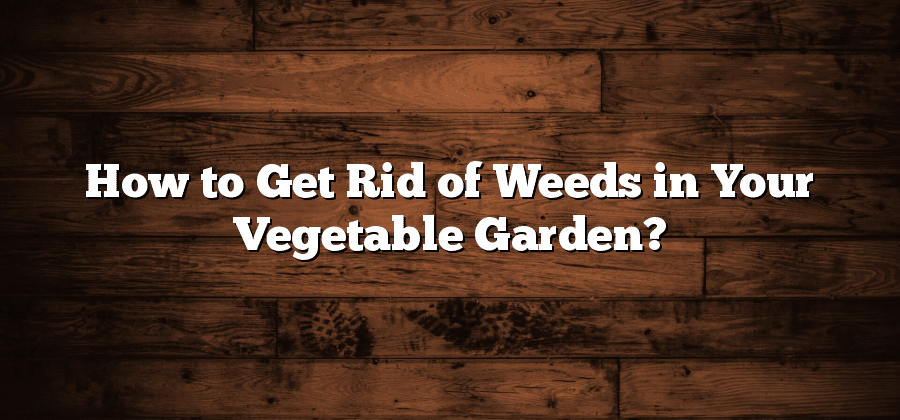Identifying Common Weeds in Vegetable Gardens
One of the challenges that vegetable gardeners face is dealing with weeds. Weeds not only compete with vegetables for nutrients and water but also harbor pests and diseases. Therefore, it is crucial to be able to identify common weeds in vegetable gardens and take appropriate actions to manage them.
There are several common weeds that gardeners may encounter in their vegetable gardens. One such weed is the dandelion (Taraxacum officinale). Easily recognizable by its yellow flowers and fluffy seed heads, dandelions are perennials that grow in a rosette shape. Another common weed is the crabgrass (Digitaria spp.), which spreads quickly and thrives in compacted soil. Its wiry stems and finger-like seed heads make it distinct from other grasses. By being able to identify these and other common weeds, gardeners can take targeted measures in preventing their growth and minimizing their impact on vegetable plants.
Understanding the Impact of Weeds on Vegetable Plants
Weeds are more than just unsightly plants that invade our vegetable gardens; they can have a significant impact on the health and productivity of our vegetable plants. One of the main ways weeds affect vegetable plants is by competing for essential resources such as sunlight, water, and nutrients. Weeds have a remarkable ability to spread quickly and aggressively, often outcompeting the desired vegetable plants for these vital resources.
In addition to resource competition, weeds can also serve as hosts for pests and diseases that can harm vegetable plants. Many insects and fungi find refuge in weeds, using them as hiding places and sources of food. These pests and diseases can easily transfer to nearby vegetable plants, leading to reduced yields or even complete crop loss. Therefore, it is crucial to recognize the impact that weeds can have on vegetable plants, both in terms of resource competition and as potential hosts for pests and diseases. By understanding these impacts, we can take proactive measures to prevent and manage weeds in our vegetable gardens, ensuring the health and success of our crops.
Implementing Effective Weed Prevention Techniques
Weed prevention is crucial for maintaining healthy vegetable gardens. By implementing effective techniques, gardeners can minimize weed growth and ensure the success of their crops. One important method is proper spacing between plants, as this reduces the availability of open spaces for weeds to establish themselves. Additionally, regularly cultivating the soil helps to disturb weed seedlings and prevent them from taking root. This technique is best done using a hand hoe or a mechanical cultivator, taking care to avoid damaging the vegetable plants.
Another effective weed prevention technique is the use of landscape fabric or weed barriers. These materials can be placed on the soil surface before planting, acting as a physical barrier that blocks weed growth. When using landscape fabric, it is important to carefully cut holes for the vegetable plants to ensure their proper growth and access to water and nutrients. Mulching around the plants also helps control weeds by smothering them and reducing their access to sunlight. Organic mulches such as straw, hay, or wood chips are excellent choices as they decompose over time, adding organic matter to the soil and improving its fertility.
Choosing the Right Mulch to Control Weeds
Mulching is a beneficial technique that aids in controlling weeds in vegetable gardens. Choosing the right mulch can significantly reduce the growth and spread of unwanted plants, thereby enhancing the health and productivity of your vegetable plants. When selecting a mulch for weed control, it is crucial to consider its thickness, durability, and ability to suppress weed growth.
One popular mulch option is organic mulch, which is derived from natural materials such as straw, bark, or wood chips. These types of mulch not only provide weed suppression by blocking sunlight but also break down over time, enriching the soil with beneficial nutrients. Another option is inorganic mulch, such as plastic or landscape fabric. These materials create a physical barrier that prevents weed growth, but they may not enhance soil health. Ultimately, the choice of mulch depends on your specific needs and preferences, as well as the type of vegetables you are growing in your garden.
Utilizing Organic Weed Control Methods
One effective method for controlling weeds in a vegetable garden is through the use of organic techniques. Organic weed control methods are preferred by many gardeners because they are environmentally friendly and do not introduce harmful chemicals into the soil. One common organic method is manual hand-pulling of weeds. This involves physically removing weeds by hand, ensuring that the entire root system is extracted to prevent regrowth. This method is most effective for small-scale weed problems and is recommended for gardeners who have the time and patience to regularly inspect and remove weeds from their vegetable beds.
Another organic weed control method is the use of mulch. Mulch serves several purposes in the garden, and weed control is one of them. When applied correctly, mulch acts as a barrier, preventing weed seeds from germinating and growing. Organic mulch, such as straw or wood chips, can be spread around the base of vegetable plants, effectively blocking out sunlight and inhibiting weed growth. It is important to choose the right type of mulch for your vegetable garden, considering factors such as the type of vegetables you are growing, the moisture requirements of your plants, and the specific weed species that are prevalent in your area.






